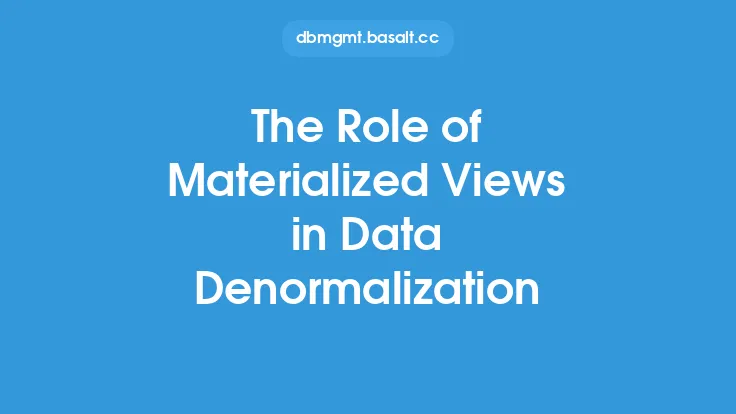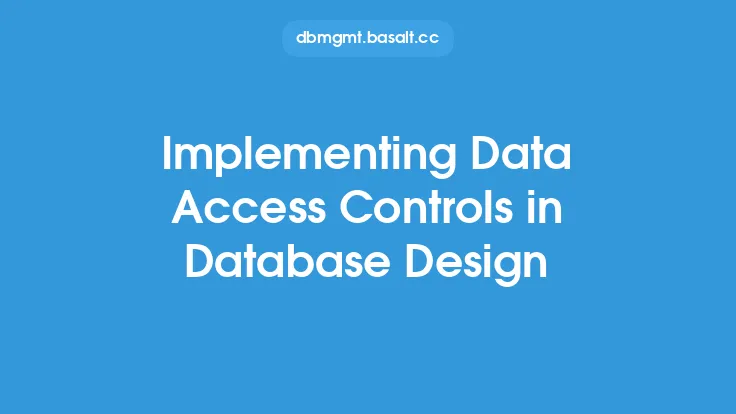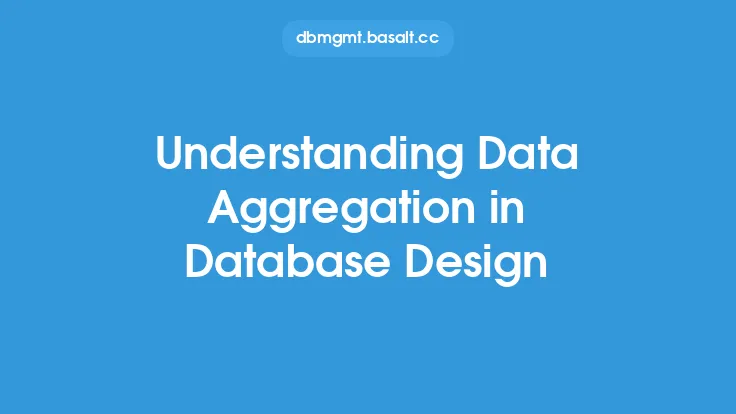In the realm of database design, data denormalization is a technique used to improve the performance of databases by reducing the number of joins required to retrieve data. One of the key tools used in data denormalization is the materialized view. A materialized view is a database object that stores the result of a query in a physical table, allowing for faster access to the data. However, materialized views are not always the best solution, and their use should be carefully considered.
Introduction to Materialized Views
Materialized views are similar to traditional views, but whereas traditional views are virtual tables that are computed on the fly, materialized views are physical tables that store the result of a query. This means that materialized views can be indexed, allowing for faster query performance. Materialized views are typically used to store the result of complex queries, such as aggregations or joins, that are frequently accessed.
Benefits of Materialized Views
Materialized views offer several benefits, including improved query performance, reduced load on the database, and increased data availability. By storing the result of complex queries in a physical table, materialized views can reduce the number of joins required to retrieve data, resulting in faster query performance. Additionally, materialized views can reduce the load on the database by minimizing the number of times the query needs to be executed. This can be particularly beneficial in databases with high traffic or complex queries.
When to Use Materialized Views
So, when should materialized views be used? Materialized views are a good fit for databases that require frequent access to complex queries, such as data warehouses or business intelligence systems. They are also useful in databases with high traffic, where the query load is high and performance is critical. Additionally, materialized views can be used to improve data availability by storing data in a physical table, allowing for faster access to the data even in the event of a failure.
Considerations for Using Materialized Views
While materialized views offer several benefits, there are also some considerations to keep in mind. One of the main considerations is data consistency. Since materialized views store data in a physical table, there is a risk of data inconsistency if the underlying data changes. To mitigate this risk, materialized views can be refreshed periodically, such as on a schedule or on demand. Another consideration is storage space. Materialized views require additional storage space to store the physical table, which can be a concern in databases with limited storage capacity.
Types of Materialized Views
There are several types of materialized views, including simple materialized views, complex materialized views, and materialized view logs. Simple materialized views are the most basic type of materialized view and store the result of a single query. Complex materialized views, on the other hand, store the result of multiple queries and can be used to store aggregated data. Materialized view logs are used to store the changes made to the underlying data, allowing for efficient refresh of the materialized view.
Refreshing Materialized Views
Materialized views can be refreshed in several ways, including on demand, on a schedule, or incrementally. On-demand refresh involves refreshing the materialized view manually, such as when the underlying data changes. Scheduled refresh involves refreshing the materialized view at regular intervals, such as daily or weekly. Incremental refresh involves refreshing the materialized view incrementally, such as when the underlying data changes.
Best Use Cases for Materialized Views
Materialized views are a good fit for several use cases, including data warehousing, business intelligence, and real-time analytics. In data warehousing, materialized views can be used to store aggregated data, such as sales totals or customer demographics. In business intelligence, materialized views can be used to store complex queries, such as forecasting or predictive analytics. In real-time analytics, materialized views can be used to store data in real-time, allowing for fast access to the data.
Common Pitfalls to Avoid
While materialized views offer several benefits, there are also some common pitfalls to avoid. One of the main pitfalls is overusing materialized views, which can result in increased storage space and decreased performance. Another pitfall is not refreshing materialized views regularly, which can result in data inconsistency. Additionally, materialized views can be complex to manage, particularly in large databases with multiple materialized views.
Conclusion
In conclusion, materialized views are a powerful tool in database design, offering improved query performance, reduced load on the database, and increased data availability. However, their use should be carefully considered, taking into account data consistency, storage space, and refresh strategies. By understanding the benefits and considerations of materialized views, database designers can make informed decisions about when to use them, resulting in improved database performance and efficiency.





